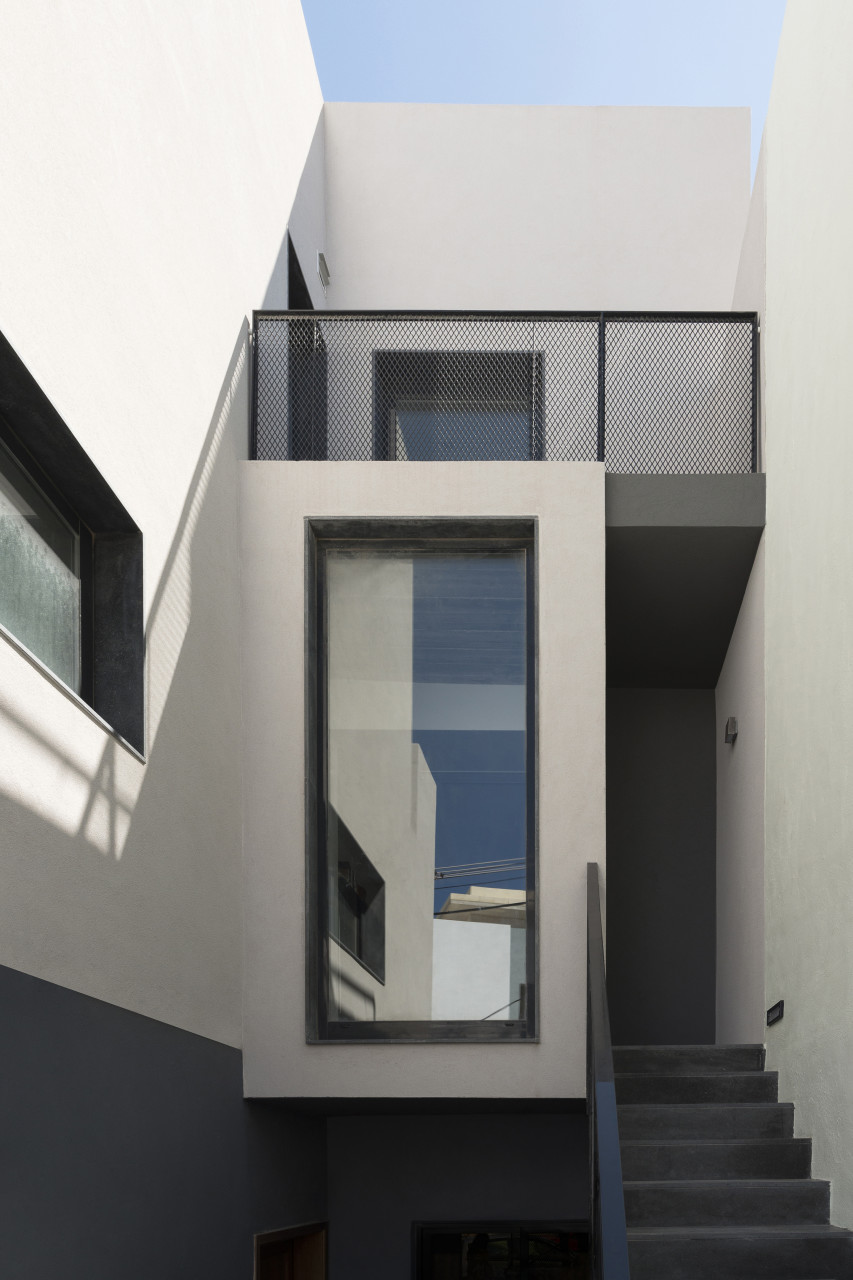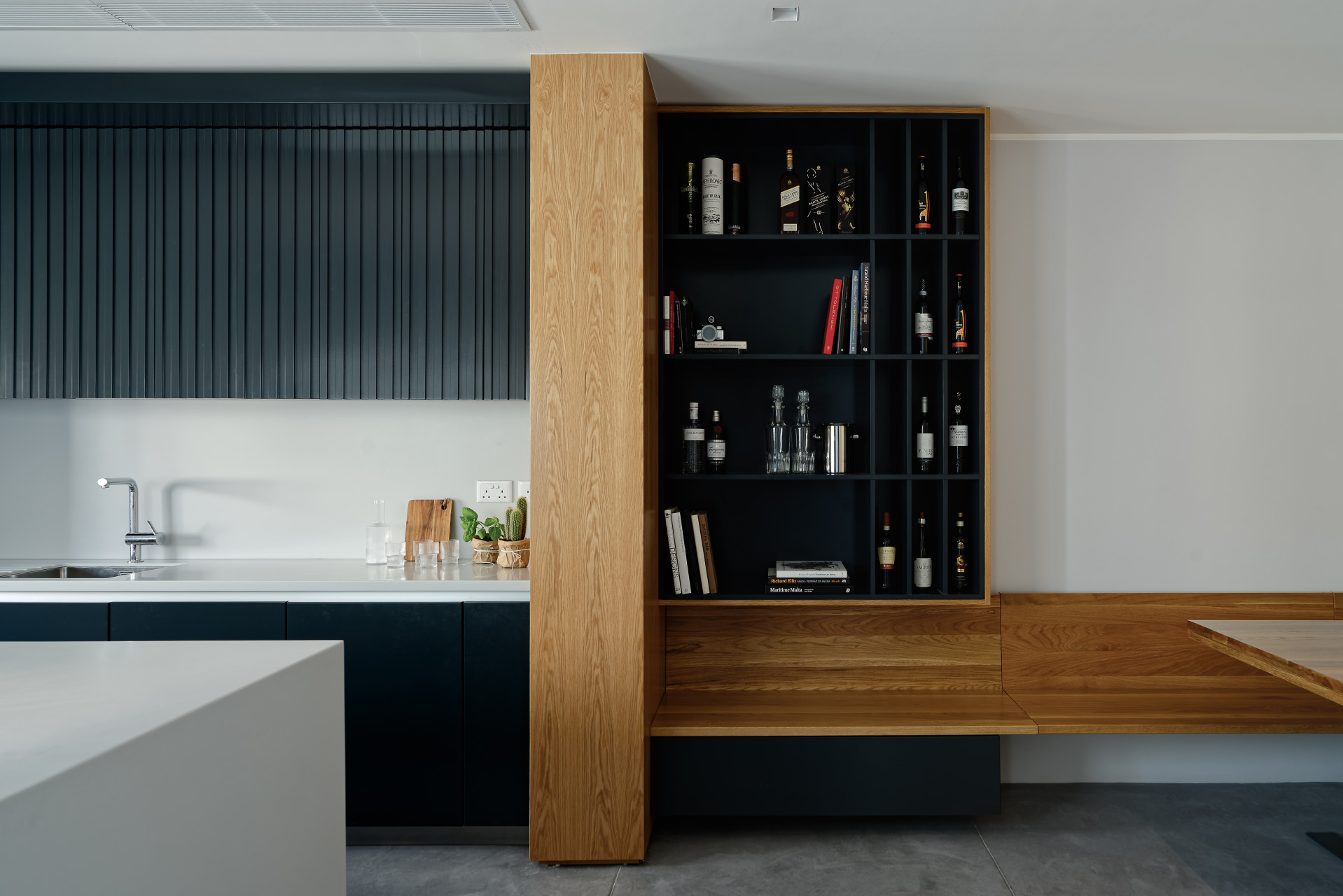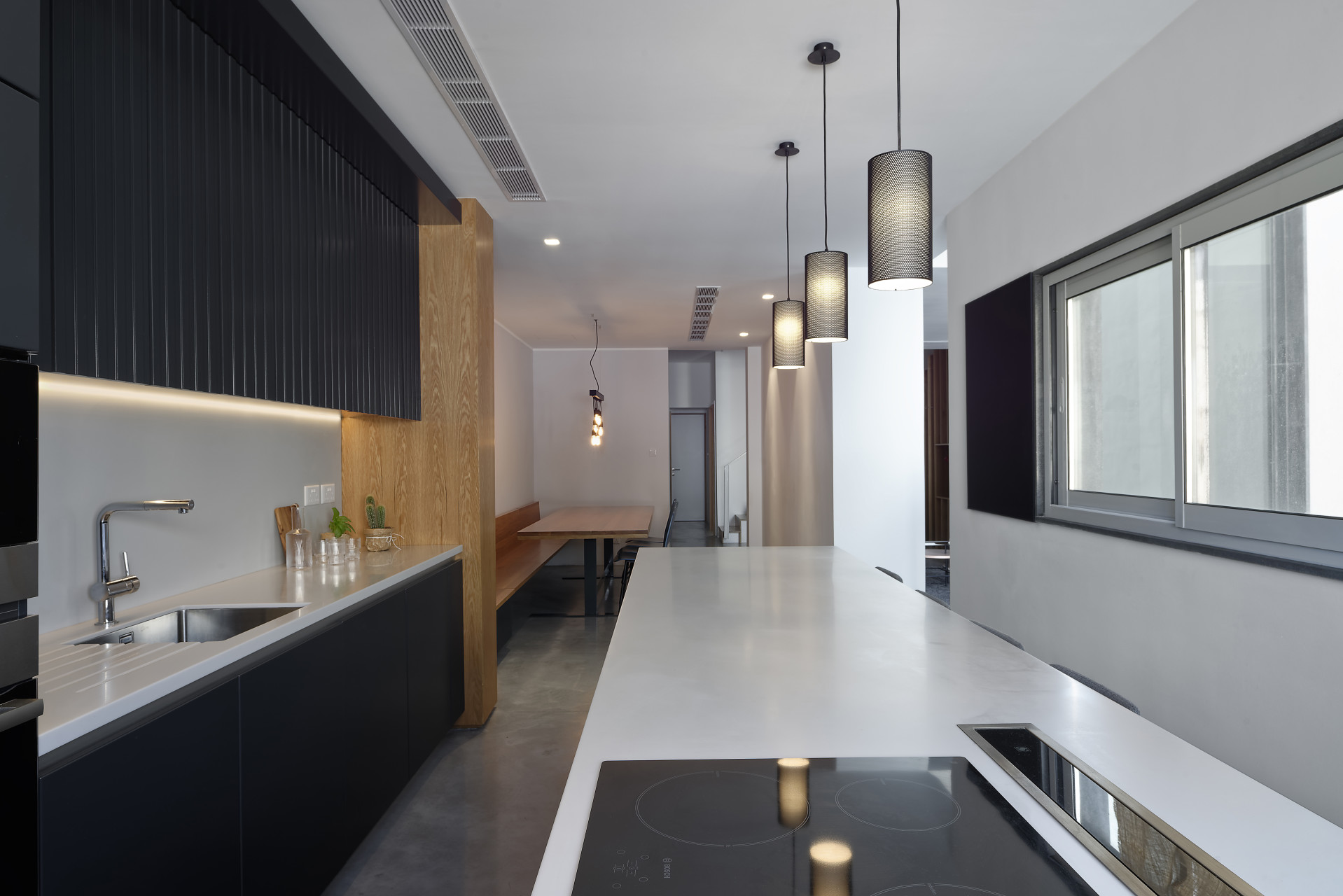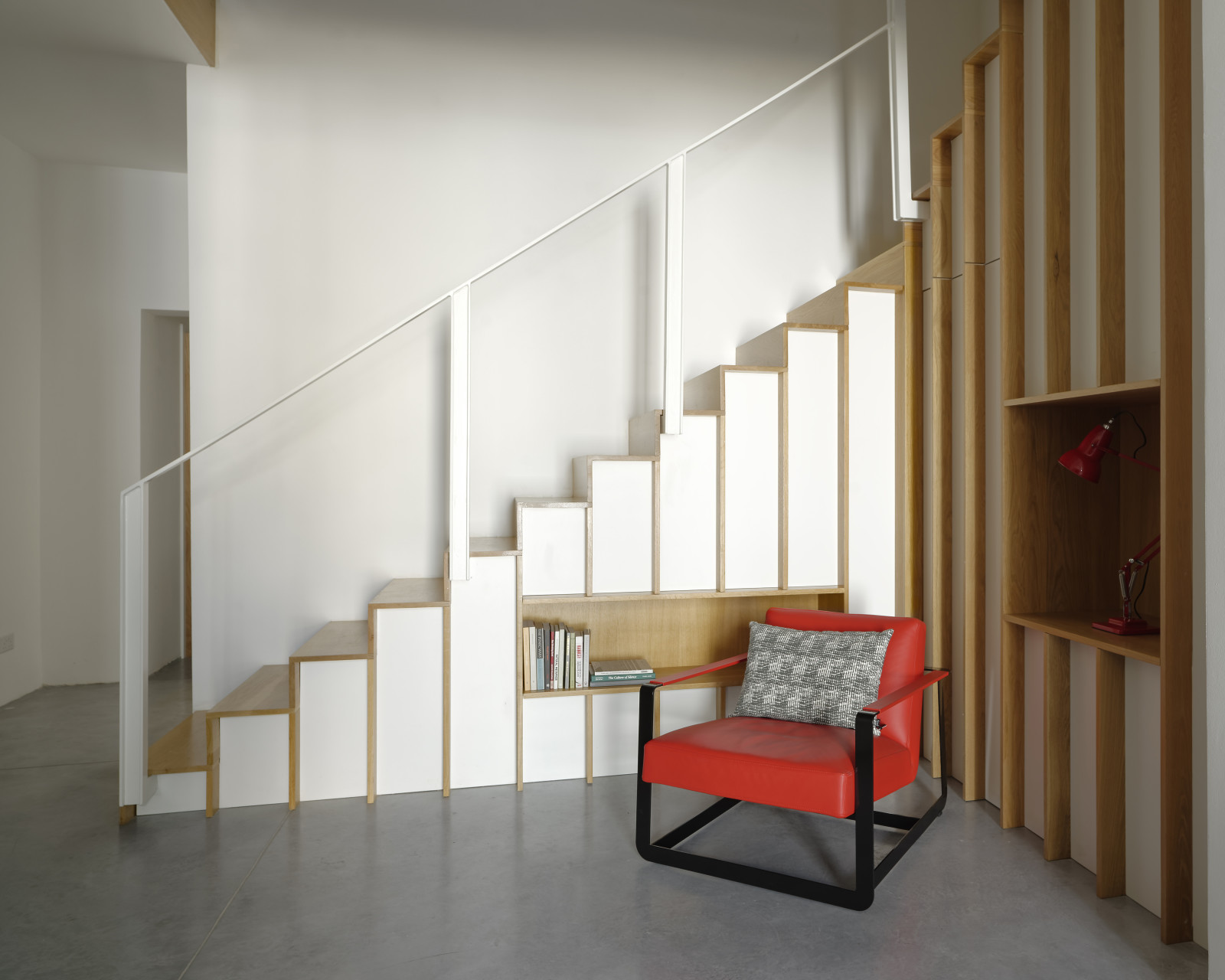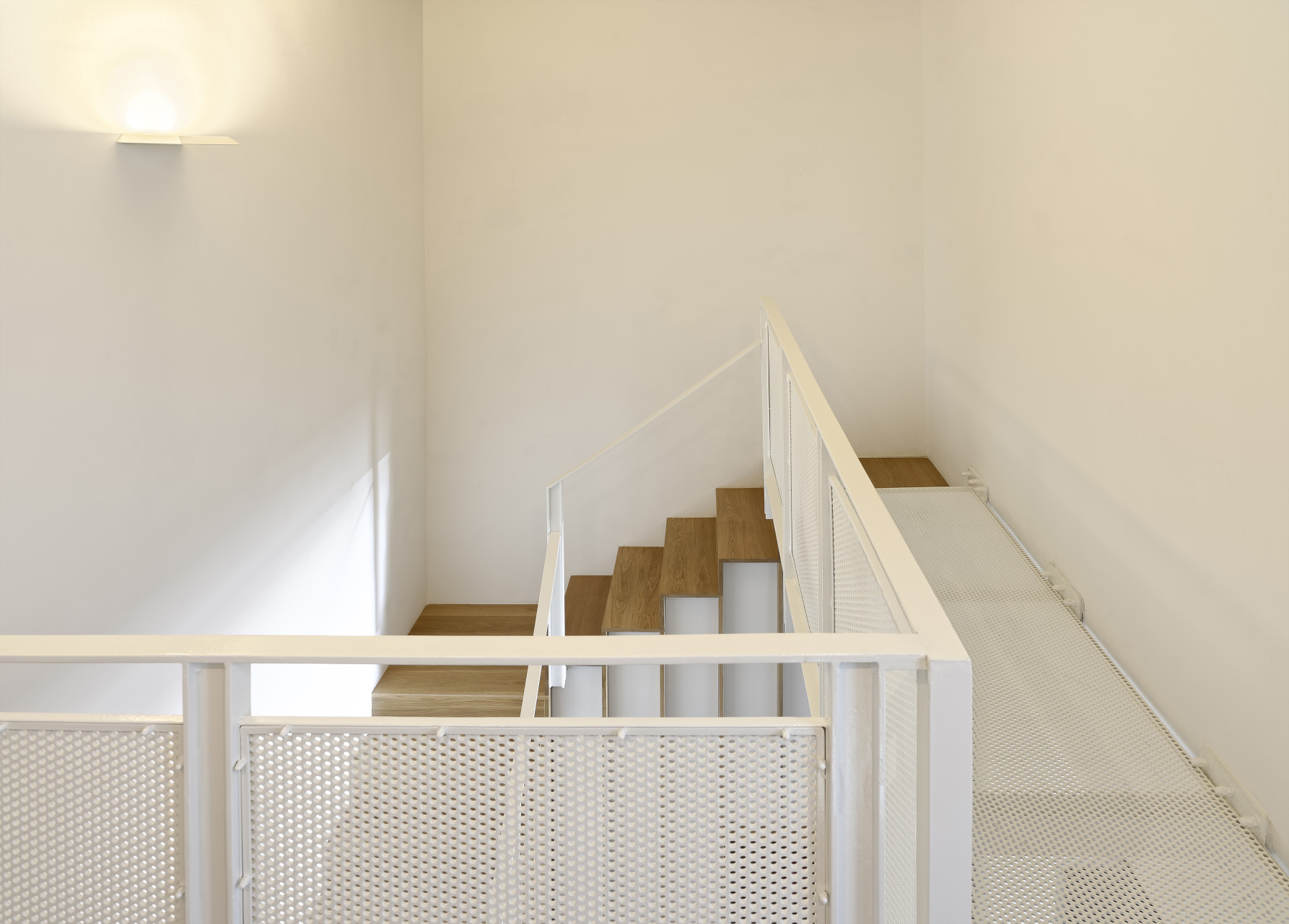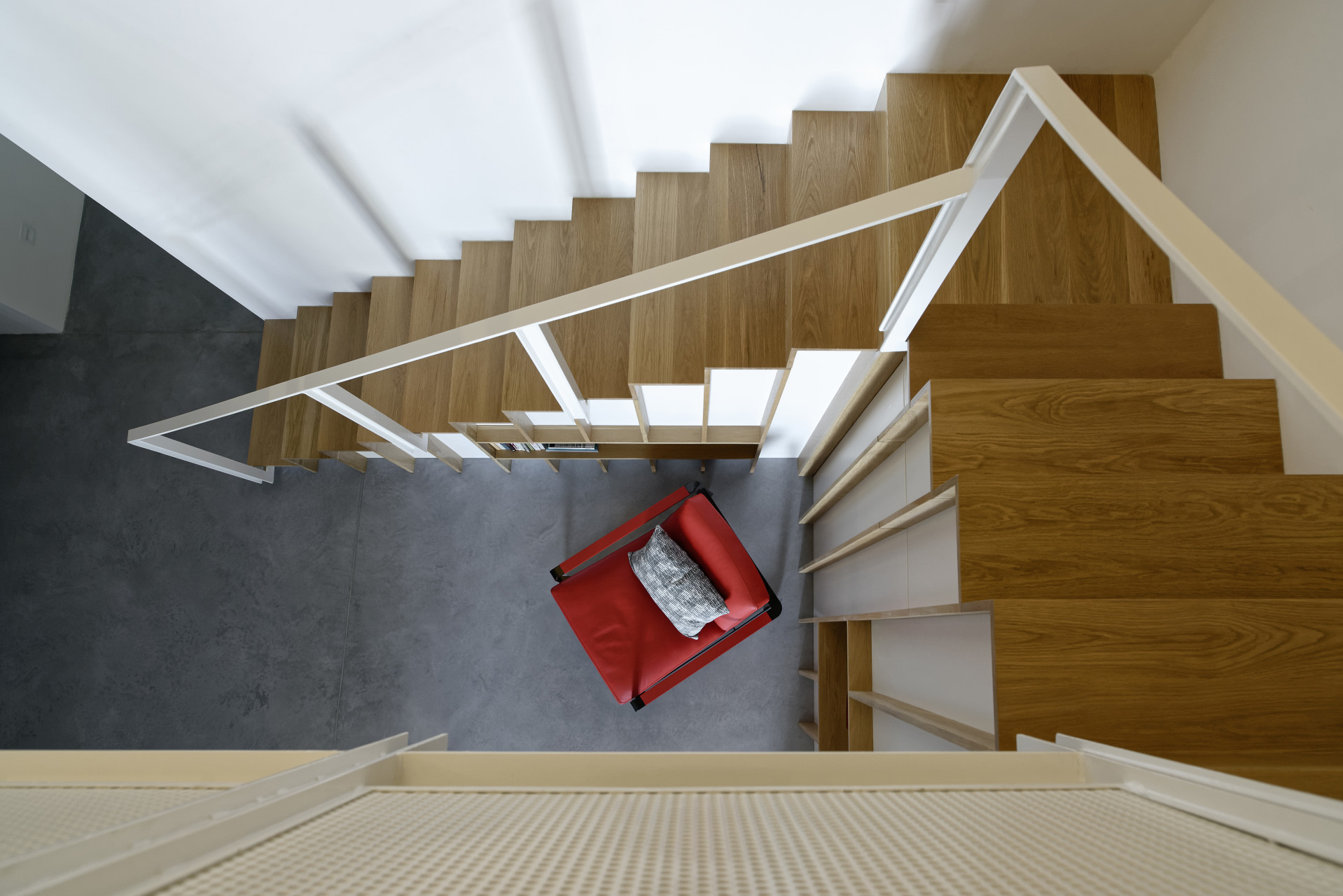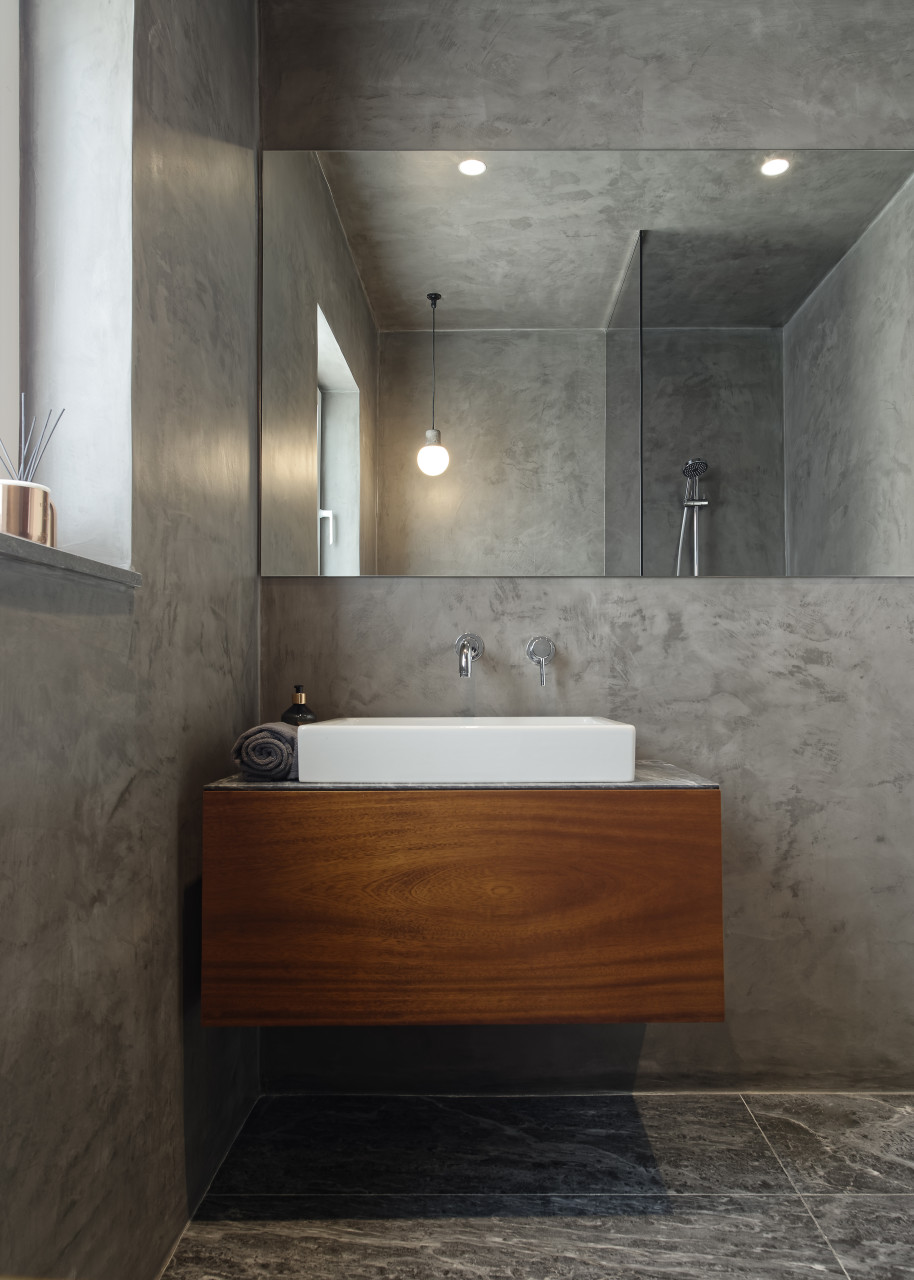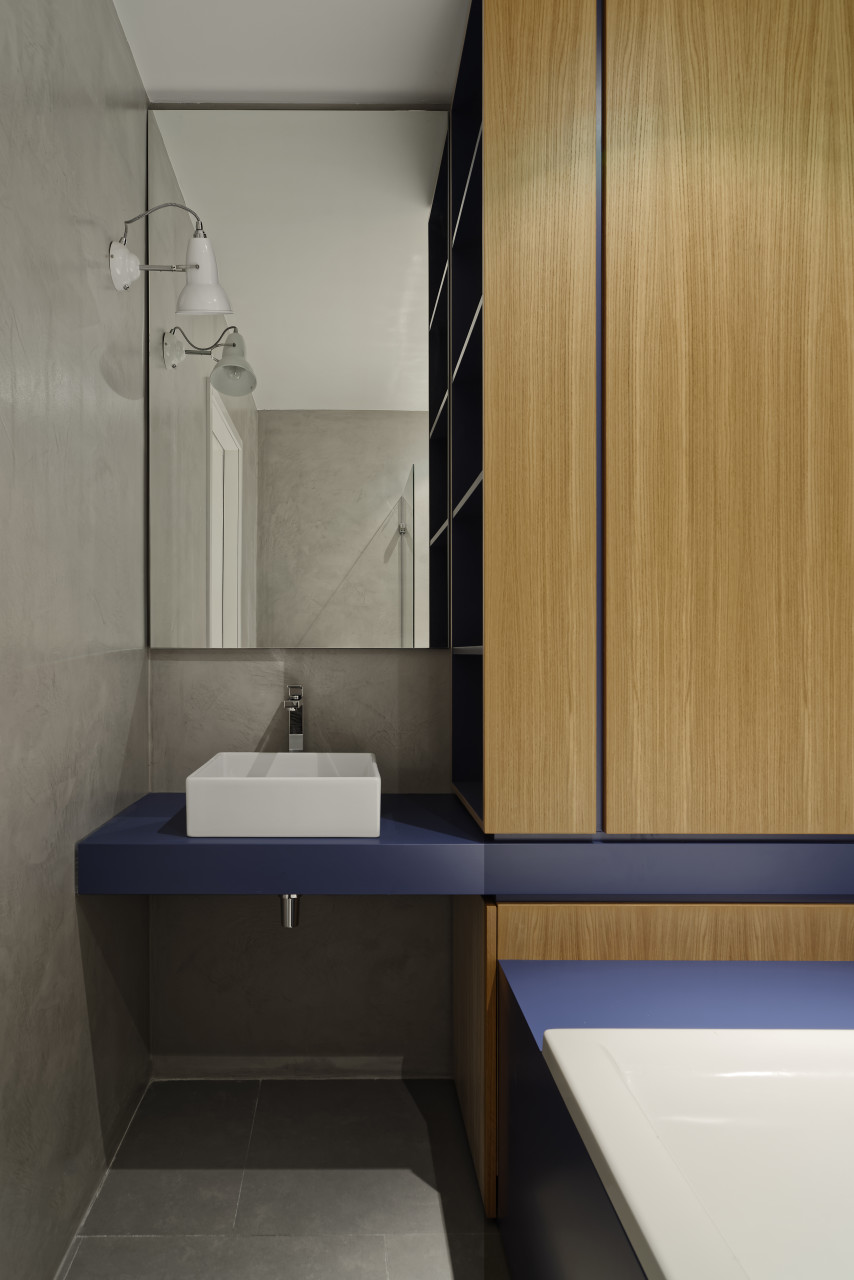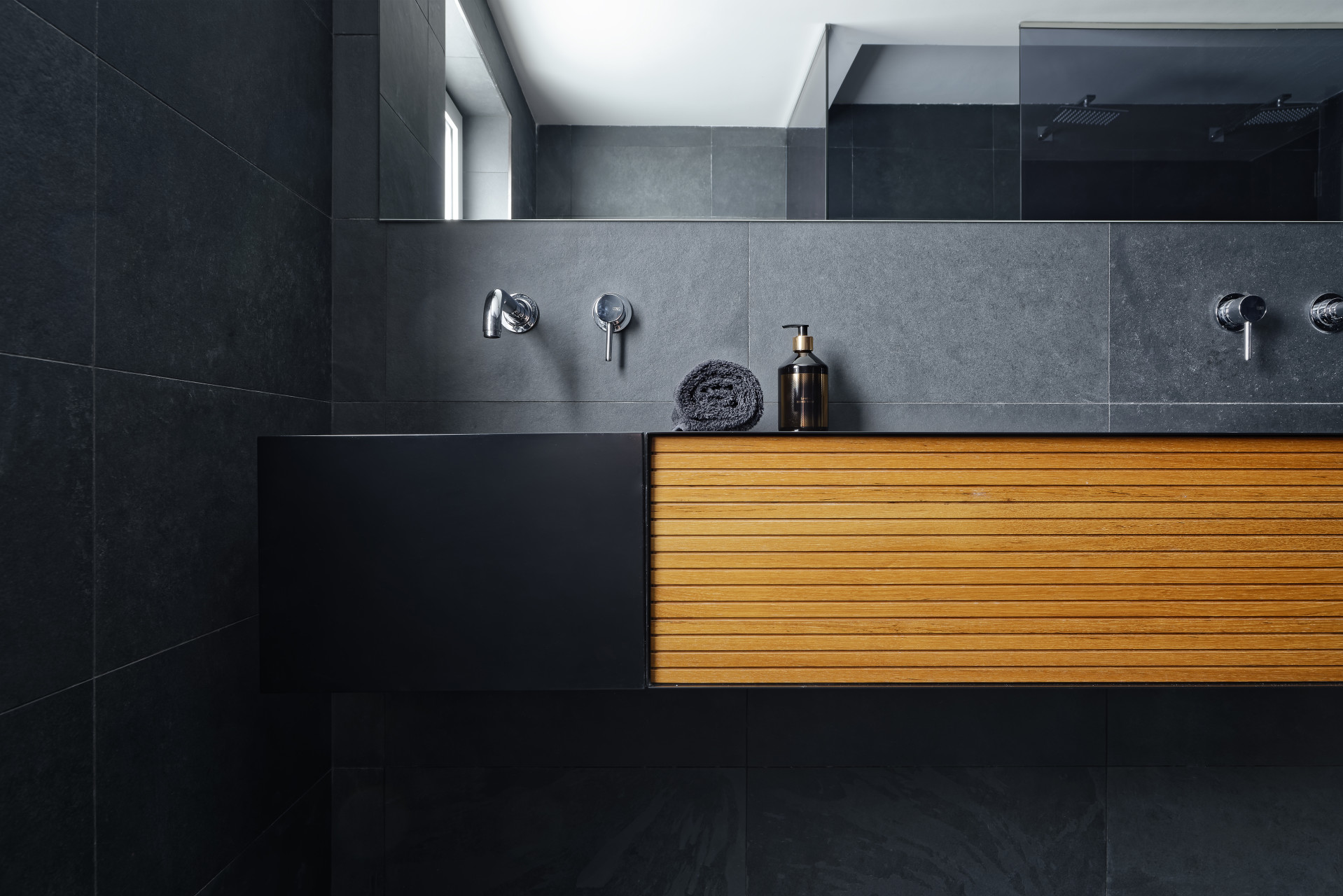DM DUPLEX
Location: Swieqi, Malta
Size: 327m2
Status: Complete 2017
Project Team: Steven Risiott, Patricia Risiott
Photography: Alex Attard
Faced with a first floor duplex maisonette which had been modelled and remodelled several times, cluttered with temporary accretions and make-shift alterations, our departure point was to strip this property to its structural carcass. This included the removal of multiple layers of floor tiles, false walls and gypsum ceilings thereby allowing us to understand how the building fabric had been modified over time. Back in its shell format, the structural parameters of the building were now visible.
The property once formed part of the terraced house at ground floor but had since been separated to form an independent residential unit. This was evident not only in the way the rooms were laid out at first floor but also through the various structural and non-structural interventions which had been carried out to adapt the property to its current use. The nature of the alterations carried out by the previous tenants was such that any character that the original building fabric might have had was lost. The building had no personality, no soul. This provided us with a blank slate.
The project had three primary goals; create a sense of place, exploit the infiltration of natural light and organise the flow of space.
Facing predominantly north, with a very narrow frontage most of which is set back significantly from the neighbouring buildings, the maisonette receives very little direct sunlight. By enlarging the façade apertures and demolishing a series of walls that divided the front rooms, we were able to increase on the amount of light that penetrated the buildings core. This also allowed us to form an open plan kitchen and dining area which although long and narrow was now brightly lit. The bespoke front door which is clad with mirror-glass on the inside also helps to reflect natural light into the entrance hallway, living room and stair core which are laterally displaced from the kitchen and dining room.
Perhaps the most crucial structural intervention involved the demolition of the masonry staircase that connected the two main floors of this duplex maisonette. The staircase previously rose from the central section of what is now the extended living room and stair core area thus creating two smaller spaces. In order to amalgamate these two areas into one larger space and create a visual link between the dining and living room, we remodelled the staircase in both form and orientation. The steps were relocated to run parallel with the wall at the extreme end of the space whilst a bridge connects the staircase to the original landing at second floor.
The design of the new staircase contrasts with the heaviness of the previous staircase that was constructed in stone and lined with a heavy, black wrought iron railing. In order to achieve a staircase design that would look as lightweight as possible we deviated from the traditional use of stone and concrete and opted for wood. The use of wood in a natural finish is limited to the actual staircase profile and a series of vertical slats which align with each step. The supporting structure of the staircase is concealed behind timber clad panels between each set of slats. These panels have been sprayed in the same colour as the walls to make the staircase appear as though it has been reduced to its bare skeletal frame thereby further contributing to the feeling of lightness. The staircase railing and bridge structure were also designed to appear weightless through the use of steel flat bars and channels. The latter appear to be slimmer than they actually are as a result of the shadows that form between the flanges. So as to increase on the amount of natural light filtration to the lower floors, the bridge flooring is composed of perforated steel mesh panels. In addition, the staircase defines a reading area and includes underlying storage space accessible through a concealed door.
The finishes material palette adopted is clean and bright allowing the furniture and furnishings to provide bold accents of colour. Polished concrete flooring runs through the living spaces serving not only as a seamless neutral backdrop but also creating a homogenous continuity between the otherwise seemingly disconnected spaces. The matt oak elements distinguish the bespoke joinery pieces by creating both a repetition as well as introducing a warm backdrop. The raw and crude palette evokes an industrial approach which is further strengthened by our choice of decorative light fittings and furnishings populating the space.

